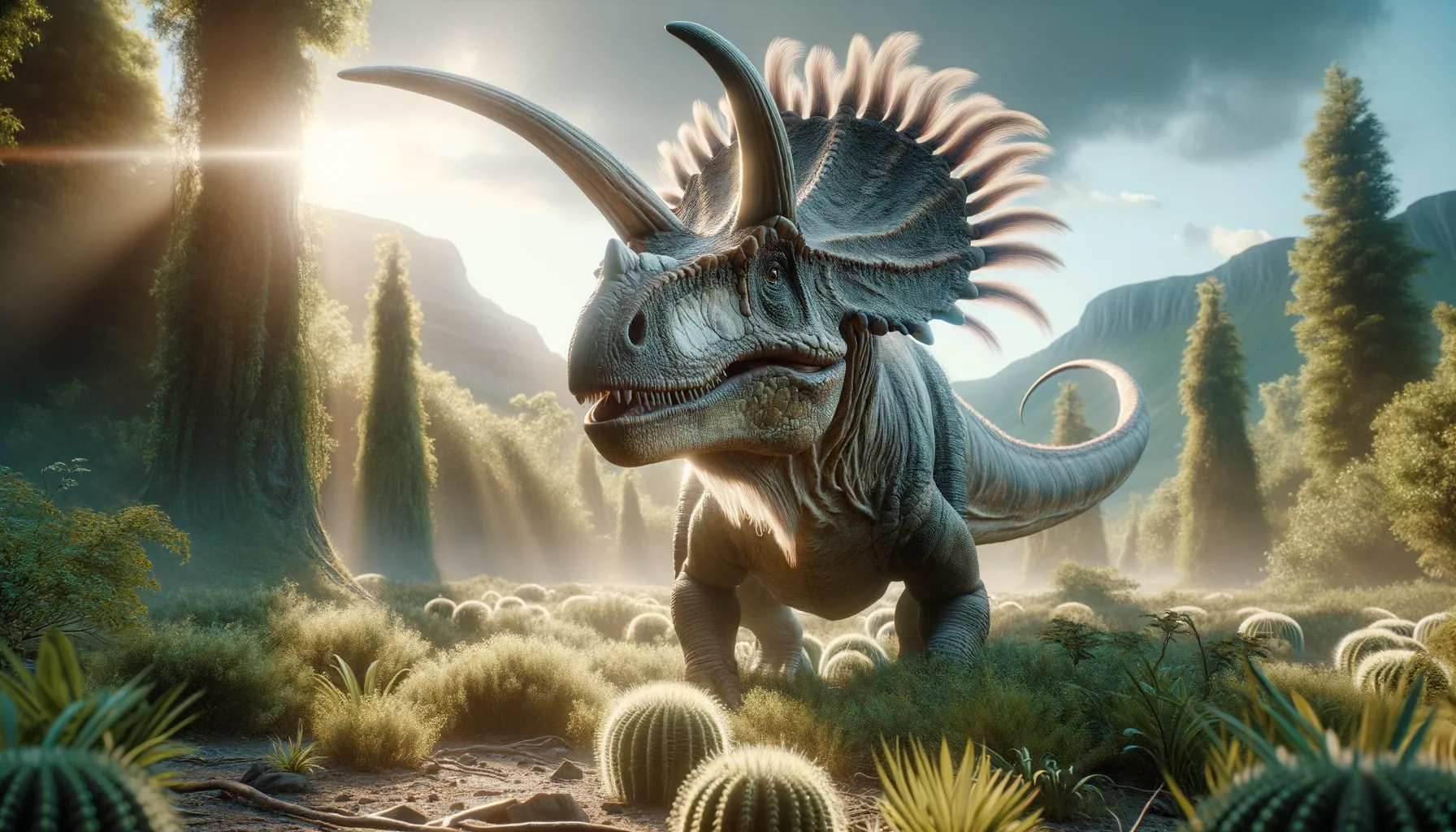
Judiceratops
Horned giant of the ancient world!
Period
Cretaceous
Length
Measured about 20 feet from head to tail.
Height
Approximately 6 feet tall at the shoulders.
Weight
Estimated to weigh around 2 tons.
Judiceratops was a plant-eating dinosaur with a large frill and facial horns, belonging to the ceratopsid family. It roamed the lush landscapes of North America during the Cretaceous period. Known for its distinctive frill, which likely served both protective and display purposes, Judiceratops was a slow-moving giant that grazed on low-lying vegetation and shrubs, aiding in the shaping of its prehistoric environment.
Diet
Judiceratops was an herbivore, primarily feeding on ferns, cycads, and other vegetation found in its Cretaceous habitat. Its beak-like mouth was perfect for clipping plants, and its large gut helped digest fibrous plant material.
Hunting
Being a herbivore, Judiceratops did not hunt for food. Instead, it spent its time grazing, using its sturdy build and horns to deter predators.
Environmental challenges
Judiceratops faced challenges such as predation from large carnivores like Tyrannosaurus. Its survival depended on the availability of adequate plant resources, which could be affected by climate changes. Seasonal variations would also have posed migration challenges in search of food and water.
Speed
Relatively slow moving due to its bulky build.
Lifespan
Likely several decades, similar to other large dinosaurs.
First discovery
Discovered in Montana, USA in 2010.
Fun Facts
- Judiceratops is a member of the ceratopsian family, which means it is related to the famous Triceratops.
- It lived during the Late Cretaceous period, around 78 million years ago.
- Judiceratops is known for its distinct frill at the back of its skull, which may have been used for display or defense.
- This dinosaur was a herbivore, feeding on plants that were abundant during its time.
- Fossils of Judiceratops have been discovered in what is now the state of Montana in the United States.
- The name 'Judiceratops' comes from the Judith River Formation, where its fossils were found.
- Judiceratops had a beak-like mouth to help it cut through tough plant material.
Growth and Development
Juveniles grew rapidly to reach sizes less vulnerable to predators. Their horns and frills developed as they matured, likely serving roles in defense, recognition, and social interaction. These features had to grow strong to ensure survival in challenging environments.
Habitat
The habitat of Judiceratops included forested regions and open plains, rich in plant life. It lived in areas with abundant vegetation, which was essential for its diet. Rivers and lakes in its environment provided necessary hydration.
Interaction with other species
Judiceratops likely coexisted with other herbivores, often roaming in herds for protection. These herds deterred predators and facilitated social interactions. Encountering carnivorous dinosaurs was common, which shaped its defensive features.
Natural lifespan
Judiceratops likely lived for decades, barring predation or environmental threats.
Reproduction
Judiceratops laid eggs, possibly in communal nesting grounds, offering protection. Parental care might have extended to guarding nests and possibly juveniles against predators. Young dinosaurs benefited from group living.
Social behaviour
This dinosaur may have exhibited herd behavior, which offered protection against predators. Social dynamics within groups might have included hierarchies or mating displays. Communication was possibly through vocalizations or physical displays.
Fossil locations
Fossils of Judiceratops have primarily been found in Montana, USA. These discoveries include partial skulls and bones that help paleontologists understand its physical characteristics and lifestyle.
